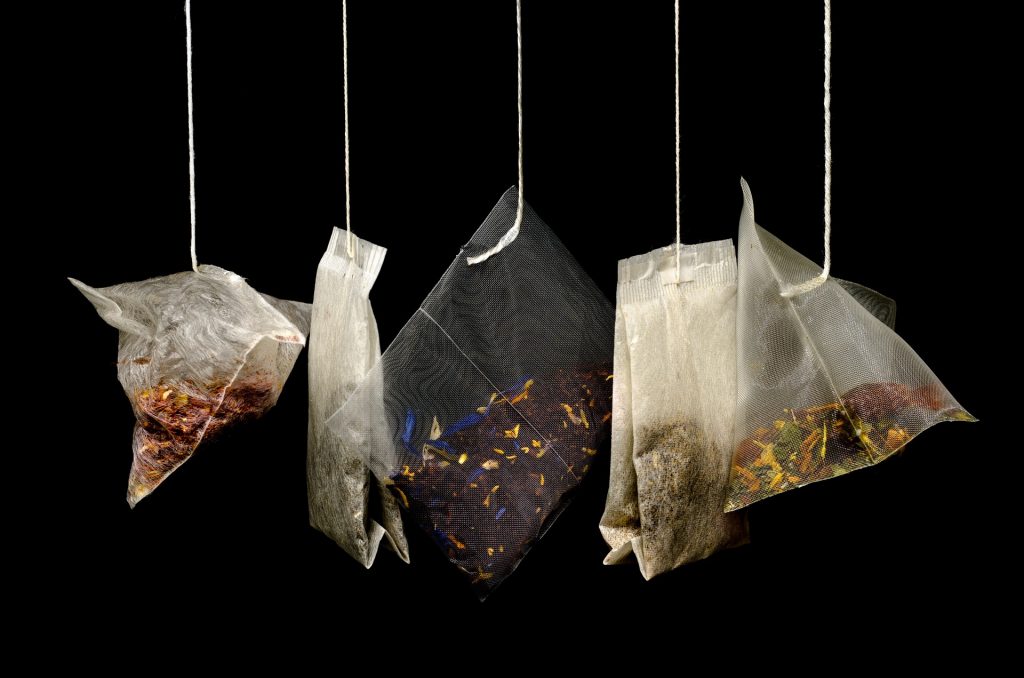 All tea is made from the Camellia sinensis plant. Black tea is produced by oxidising the leaves, whereas green (and white) tea in produced by steaming them. These two differing processing steps produces a final produce with differing taste, aroma and chemical content. The antioxidants in tea leaves are preserved during the steaming in green tea production but are altered the production of black tea. This produces two very distinct antioxidant profiles, with green tea containing high amounts of catechins, but black tea containing high amounts of oxidised and condensed catechin polymers. However, while the antioxidants in the teas differ, the total antioxidant protection conferred by the two types of tea is still very high. A number of studies have compared black and green tea for their antioxidant capacity, and the results obtained depend on the variety of tea tested and the manner in which it is tested. While green tea receives a lot of attention for its antioxidant content, in reality, black tea is not inferior to green tea in this regard.
All tea is made from the Camellia sinensis plant. Black tea is produced by oxidising the leaves, whereas green (and white) tea in produced by steaming them. These two differing processing steps produces a final produce with differing taste, aroma and chemical content. The antioxidants in tea leaves are preserved during the steaming in green tea production but are altered the production of black tea. This produces two very distinct antioxidant profiles, with green tea containing high amounts of catechins, but black tea containing high amounts of oxidised and condensed catechin polymers. However, while the antioxidants in the teas differ, the total antioxidant protection conferred by the two types of tea is still very high. A number of studies have compared black and green tea for their antioxidant capacity, and the results obtained depend on the variety of tea tested and the manner in which it is tested. While green tea receives a lot of attention for its antioxidant content, in reality, black tea is not inferior to green tea in this regard.
A comparison of black and green tea was performed by one group of researchers using the ORAC (oxygen radical absorbance capacity) method. A higher ORAC score indicates a greater capacity to scavenge oxygen radicals. In this study, black tea obtained a score of 1101 μmol tocopherol equivalents (TE) per gram, whereas green tea obtained a score of only 608 μmol TE per gram. In another study, black tea obtained an ORAC score of 927 μmol TE per gram, whereas green tea obtained an ORAC score 814 μmol TE per gram. In a third study, the ORAC values reported for green tea were 61 mM TE for green tea, and 62 mM TE for black tea (which was higher than that reported for white tea at 47 mM TE) (note the units are different, but the ratios between them is still valid). However, in this study they also measured the antioxidant capacity using the ABTS method, and in this assay the green tea obtained a score of 55 mM TE, whereas the black and white tea obtained scores of 34 and 38 mM TE, respectively.

Green, black and white tea all have high total antioxidant capacities. The actual values depend on the method used and the variety of tea. However, generally black tea contains similar total antioxidant capacities to green and white tea, despite having a quite different antioxidant profile. In human tissues, black tea theaflavin antioxidants and green tea catechin antioxidants have been shown to be equally effective, using LDL oxidation as a model. Drinking either type of tea therefore likely confers significant antioxidant protection.
Therefore the antioxidant capacity of the tea may vary depending on the antioxidant assay used. This is not surprising as the assay measure different chemical reactions and differences between them is known and understood by nutritional scientists. However, the point remains that in these studies and others, black tea compared favourably to green tea when the total antioxidant capacity is considered. It is interesting that black, green and white tea, all made from the Camellia sinensis plant, have much higher total antioxidant capacity than most fruit and vegetables. For example, in one of the studies above, the green and black tea ORAC scored were 814 and 927 μmol TE per gram, whereas the highest vegetable was kale with an ORAC score of 179 μmol TE per gram. This demonstrates the very high antioxidant capacity of tea, and explains why studies show that tea confers significant antioxidant capacity to the tissues of those that drink it regularly. Black or green tea both appear to be equally good in this regard.
Eat Well, Stay Healthy, Protect Yourself
RdB
